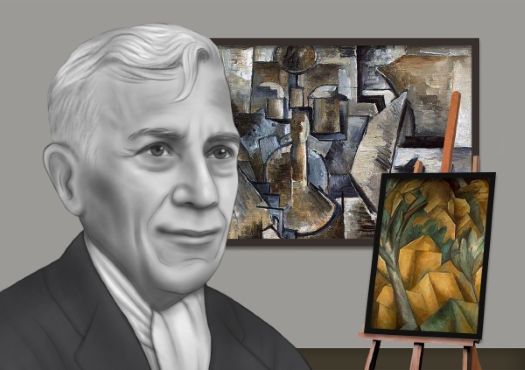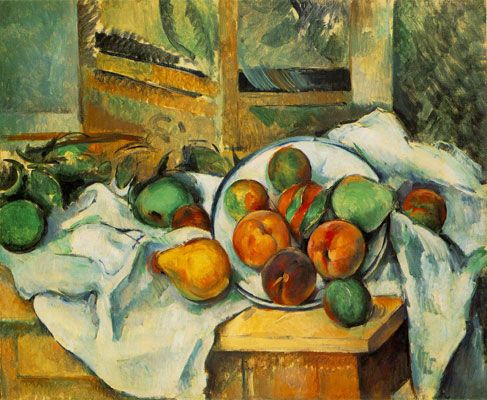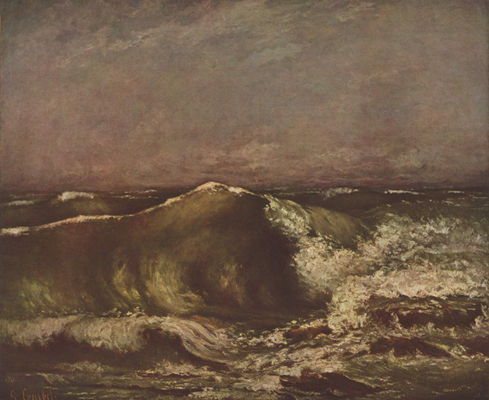Summary of Georges Braque
Georges Braque was at the forefront of the revolutionary art movement of Cubism. Braque's work throughout his life focused on still lifes and means of viewing objects from various perspectives through color, line, and texture. While his collaboration with Pablo Picasso and their Cubist works are best known, Braque had a long painting career that continued well beyond that period.
Accomplishments
- Though Braque started out as a member of the Fauves, he began developing a Cubist style after meeting Pablo Picasso. While their paintings shared many similarities in palette, style and subject matter, Braque stated that unlike Picasso, his work was "devoid of iconological commentary," and was concerned purely with pictorial space and composition.
- Braque sought balance and harmony in his compositions, especially through papier collés, a pasted paper collage technique that Picasso and Braque invented in 1912. Braque, however, took collage one step further by gluing cut-up advertisements into his canvases. This foreshadowed modern art movements concerned with critiquing media, such as Pop art.
- Braque stenciled letters onto paintings, blended pigments with sand, and copied wood grain and marble to achieve great levels of dimension in his paintings. His depictions of still lifes are so abstract that they border on becoming patterns that express an essence of the objects viewed rather than direct representations.
The Life of Georges Braque
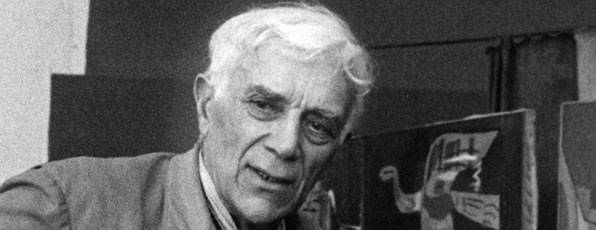
Although Braque and Picasso were very close for a period, the two art giants were almost polar opposites. Braque stayed married with one woman, fought in World War I, and was reserved and tall.
Important Art by Georges Braque
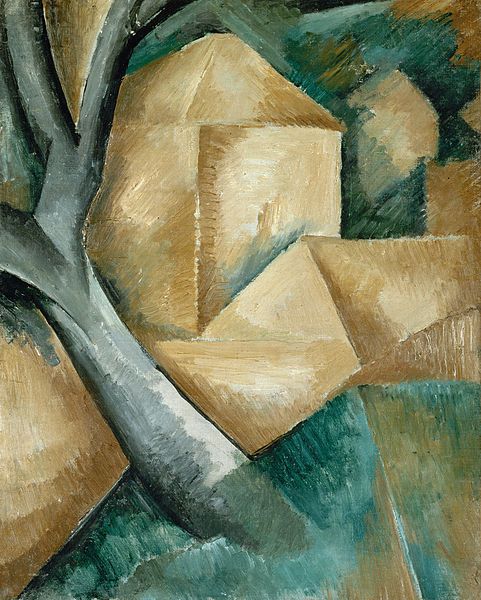
Houses of l'Estaque
Braque's paintings made over the summer of 1908 at l'Estaque are considered the first Cubist paintings. After being rejected by the Salon d'Automne, they were fortunately exhibited that fall at Daniel-Henri Kahnweiler's Paris gallery. These simple landscape paintings showed Braque's determination to break imagery into dissected parts. The brown and green palette here also predicts a palette that Braque employed in many paintings to come.
Oil on canvas - Museum of Art, Berne
Clarinet and Bottle of Rum on the Mantlepiece
Clarinet and Bottle of Rum on the Mantlepiece is typical of Braque's subject matter, yet is unique as an early example of collage. In this painting, he stenciled the word "valse" to mean "waltz," in continuation with his interest in musical themes and instruments. "RHU" are first three letters for the French word for rum. Again using an exploded perspective, the viewer barely perceives a scroll in the lower right corner, which could allude to a human head, a violin or cello, or the mantelpiece in the title.
Oil on canvas - Collection of the Tate, United Kingdom
Bottle and Fishes
Braque depicted both bottles and fishes throughout his entire painting career, and these objects stand as markers to differentiate his various styles. Bottle and Fishes is an excellent example of Braque's foray into Analytic Cubism, while he worked closely with Picasso. This painting has the restricted characteristic earth tone palette rendering barely perceptible objects as they disintegrate along a horizontal plane. While there are some diagonal lines, Braque's early paintings tended to work vertically or horizontally.
Oil on canvas - Collection of the Tate, United Kingdom
Violin and Pipe
Collage helped Braque to realize that, "color acts simultaneously with form but has nothing to do with it,". He made collages to inspire painting compositions, but also as works themselves. In Violin and Pipe, he chooses a stringed instrument as his subject matter. Since there is no concrete evidence that this is a violin, one can understand better how Braque is studying the shapes within the object and pulling them apart to move them around, as if shuffling a deck of cards.
Paper, mixed media, pencil on paper - Centre Georges Pompidou, Paris
Fruit on a Table-cloth with a Fruit Dish
The subject matter of this painting commemorates a banquet held in Braque's honor upon returning from the war. Picasso and Gris made headway in Synthetic Cubism, while Braque resumed the development of his own style, still Cubist, but more concentrated on color and texture. Fruit on a Table-cloth with a Fruit Dish shows a table display flattened out in the pictorial plane as Braque had done many times before, but here he replicates the texture of wood and marble, and even shades the fruit.
Oil on canvas - Centre Georges Pompidou, Paris
Balustre et Crane
Balustre et Crane predicts a series of still lifes Braque created called Vanitas, in which objects symbolize agony or mental misery. He painted skulls repeatedly following his return from war and during the onset of World War II. In these paintings, Balustre et Crane in particular, Braque uses a bright array of colors to represent emotional reactions to the political discomfort he felt about the war.
Oil on canvas - Private Collection
Biography of Georges Braque
Childhood
Georges Braque was guided from a young age toward creative painting techniques. His father managed a decorative painting business and Braque's interest in texture and tactility perhaps came from working with him as a decorator. In 1899, at age seventeen, Braque moved from Argenteuil into Paris, accompanied by friends Othon Friesz and Raoul Dufy.
Early Training
Braque's earliest paintings were made in the Fauvist style. From 1902-1905, after giving up work as a decorator to pursue painting full-time he pursued Fauvist ideas and coordinated with Henri Matisse. He contributed his colorful Fauvist paintings to his first exhibition at the Salon des Independants in 1906. However, he was extremely affected by a visit to Pablo Picasso's studio in 1907, to see Picasso's breakthrough work - Les Demoiselles d'Avignon. After this encounter, the two artists forged an intimate friendship and artistic camaraderie. "We would get together every single day," Braque said, "to discuss and assay the ideas that were forming, as well as to compare our respective works". The drastic change in Braque's painting style can be directly attributed to Picasso. Once he understood Picasso's goals, Braque aimed to strengthen "the constructive elements in his works while foregoing the expressive excesses of Fauvism". His landscape paintings in which scenes were distilled into basic shapes and colors inspired French art critic, Louis Vauxcelles, to coin the term Cubism by describing Braque's work as "bizarreries cubiques." During this pre-war, highly-producive time, Braque (with Picasso) made large contributions to modern art, particularly through their exploration of Cubism - through the so-called Analytic and Synthetic phases of the movement.
Mature Period
Braque and Picasso worked in synchronicity until Braque's return from war in 1914. When Picasso began to paint figuratively (joining what is known as Interwar Classicism), Braque felt his friend had betrayed their Cubist systems and rules, and continued on his own. However, he continued to remain influenced by Picasso's work, especially in regards to papier collés, a collage technique pioneered by both artists using only pasted paper. His collages featured geometric shapes interrupted by musical instruments, grapes, or furniture. These were so three-dimensional that they are considered important in the development of Cubist sculpture. By 1918, Braque felt he had sufficiently explored papier collés, and returned to still life painting.
Viewers noted a more limited palette at Braque's first post-war solo show in 1919. Yet he steadfastly adhered to Cubist rules about depicting objects from multi-faceted perspectives in geometrically patterned ways. In this, he continued as a true Cubist longer than did Picasso, whose style, subject matter and palettes changed continuously. Braque was most interested in showing how objects look when viewed over time in different temporal spaces and pictorial planes. As a result of his dedication to depicting space in various ways, he naturally gravitated towards designing sets and costumes for theater and ballet performances, doing this throughout the 1920s.
Late Years and Death
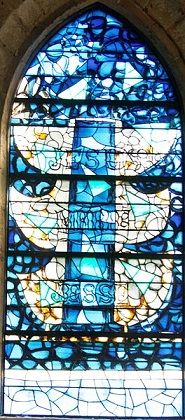
In 1929, Braque took up landscape painting once again, using new, bright colors influenced by Picasso and Matisse. Then in the 1930s, Braque began to portray Greek heroes and deities, though he claimed the subjects were stripped of their symbolism and ought to be viewed through a purely formal lens. He called these works exercises in calligraphy, possibly because they were not strictly about figures but more about sheer line and shape. In the latter half of the 1930s, Braque embarked on painting his Vanitas series, through which he existentially considered death and suffering. Growing increasingly obsessed with the physicality of his paintings, he explored the ways in which brushstrokes and paint qualities could enhance his subject matter.
The objects used in his still lifes were highly personal to Braque, however, he did not reveal these meanings. Skulls, for example, were objects he painted repeatedly at the onset of World War II. In 1944, when World War II ended, Braque began to embrace lighter subjects like flowers, billiard tables, and garden chairs. His final series of eight canvases made from 1948-1955, each titled Atelier, or Studio, depicted imagery that represented the artist's inner thoughts on each object rather than clues to the outside world. At the very end of his life, Braque painted birds repeatedly, as the perfect symbol of his obsession with space and movement.
The Legacy of Georges Braque

Braque is remembered as a progenitor of Cubism, who was both rational and sensuous in his still life paintings. He was a classic painter in this sense, and has influenced the likes of Jim Dine and Wayne Thiebaud, who focused on still life painting. Braque is also a celebrated colorist, and can be traced through contemporary art to those painters who work with color in similar ways. Perhaps Braque is most remembered for his use of collage, as many contemporary artists, from sculptors like Jessica Stockholder to painters like Mark Bradford, apply paper to their works as a means to comment on society and its products.
Influences and Connections

-
![Pablo Picasso]() Pablo Picasso
Pablo Picasso -
![Juan Gris]() Juan Gris
Juan Gris -
![André Derain]() André Derain
André Derain -
![Henri Laurens]() Henri Laurens
Henri Laurens ![Erik Satie]() Erik Satie
Erik Satie
-
![Ambroise Vollard]() Ambroise Vollard
Ambroise Vollard -
![Daniel-Henry Kahnweiler]() Daniel-Henry Kahnweiler
Daniel-Henry Kahnweiler ![Leonide Massine]() Leonide Massine
Leonide Massine![Paul Rosenberg]() Paul Rosenberg
Paul Rosenberg
 Ask The Art Story AI
Ask The Art Story AI